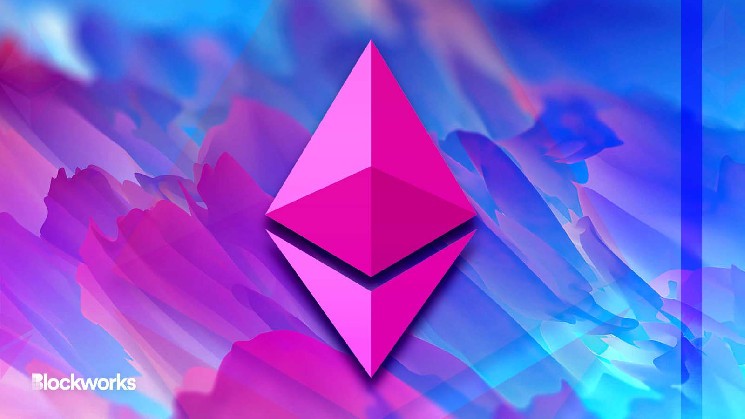Ethereum Now Deflationary for 2 Months Straight

Ethereum has been deflationary for two months straight due to a surge in on-chain activity on protocols such as Uniswap and Blur.
The network pushed an upgrade (EIP-1559) in August 2021 that meant transaction fees would be burned instead of directed to the network’s miners — a precursor to Ethereum’s switch to proof-of-stake last September.
EIP-1559 meant Ethereum would at times produce deflationary blocks (more ETH burned than distributed). But the asset has now been solidly deflationary every day since late January, per network tracker ultrasound.money.
Prior to that, Ethereum had briefly entered deflationary status in November 2022, about two months after Ethereum’s Merge cut issuance by more than 90%, before slipping back to inflationary by December.

Ultrasound.money only maps Ethereum’s deflationary status since the Merge — making its recent streak the longest on record for this particular tracker.
Research analysts at Compass Point Research and Trading said in a research report earlier this month that the increase in burned ETH has largely been driven by increased Uniswap usage in response to centralized exchange uncertainty, as well as continued usage of the Blur NFT marketplace.
Uniswap tops the ETH burned leaderboard in the past 30 days, with roughly 8,766 ETH ($16 million) burned in that span. NFT marketplace and aggregator Blur has burned about 6,535 ETH ($11.9 million) over the last month.
“The amount of ETH burned has seen a steady climb over the past two months due to an increase in on-chain activity, with the largest surge occurring on March 10 as fear surrounding USDC’s backing caused a depeg,” Blockworks Research Analyst Sam Martin said.
“On-chain users scrambled to dump USDC for USDT, which led to the largest daily burn since the Merge’s implementation.”
Read More: Blur Still Sees Record NFT Volumes Even After Crypto Airdrop
The depegging of USDC followed the collapse of Silicon Valley Bank (SVB). It plunged to as low as $0.87 before ultimately returning to its $1 peg.
The failures of financial institutions in recent weeks, including Silvergate, SVB and Signature Bank, have prompted crypto industry participants to advocate for decentralized financial infrastructure as a more secure and reliable alternative.
Compass Point’s March 9 report predicted that the introduction of layer-2 blockchains can take market share away from so-called “ETH killers” and bring users back to the Ethereum network.
“We continue to believe that L2 scaling and liquid staking growth have the potential to be significant catalysts for Ethereum this year, and help drive on-boarding of users, adoption and overall demand and activity of the network,” analysts wrote.







 Bitcoin
Bitcoin  Ethereum
Ethereum  Tether
Tether  USDC
USDC  Dogecoin
Dogecoin  Cardano
Cardano  TRON
TRON  Bitcoin Cash
Bitcoin Cash  Chainlink
Chainlink  Polygon
Polygon  Litecoin
Litecoin  LEO Token
LEO Token  Dai
Dai  Ethereum Classic
Ethereum Classic  Hedera
Hedera  Stacks
Stacks  Cronos
Cronos  Stellar
Stellar  Cosmos Hub
Cosmos Hub  OKB
OKB  Maker
Maker  Theta Network
Theta Network  Monero
Monero  Algorand
Algorand  NEO
NEO  Gate
Gate  Tezos
Tezos  KuCoin
KuCoin  Synthetix Network
Synthetix Network  EOS
EOS  IOTA
IOTA  Bitcoin Gold
Bitcoin Gold  Tether Gold
Tether Gold  TrueUSD
TrueUSD  Enjin Coin
Enjin Coin  Zilliqa
Zilliqa  Holo
Holo  Ravencoin
Ravencoin  0x Protocol
0x Protocol  Siacoin
Siacoin  Qtum
Qtum  Basic Attention
Basic Attention  Dash
Dash  Zcash
Zcash  NEM
NEM  Decred
Decred  Ontology
Ontology  Waves
Waves  Lisk
Lisk  DigiByte
DigiByte  Status
Status  Numeraire
Numeraire  Nano
Nano  Pax Dollar
Pax Dollar  Hive
Hive  Steem
Steem  OMG Network
OMG Network  Huobi
Huobi  BUSD
BUSD  Ren
Ren  Bytom
Bytom  Bitcoin Diamond
Bitcoin Diamond  HUSD
HUSD  Kyber Network Crystal Legacy
Kyber Network Crystal Legacy  Energi
Energi  Augur
Augur